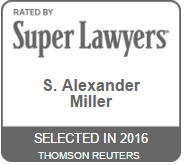
THE FACTS:
A corporate client brought one of their employees to our office for a consultation. The employee was currently on an H-1B visa working for the company. We learned that a prior law firm had begun a Labor Certification (PERM) Sponsorship case on his behalf and made some significant mistakes. The corporate client was a wonderful company and the employee entrusted their case to our office.
THE LAW:
If a U.S-based company wishes to hire a foreign worker, they may do so through a process known as “PERM.” This process provides a permanent “green card” to the foreign worker provided the employer takes some basic steps:
Labor Certification
Some immigrant visa preferences require you to already have a job offer from a U.S. employer. This employer will be considered your sponsor. For some visa categories, before the U.S. employer can submit an immigration petition to USCIS, the employer must obtain an approved labor certification from the U.S. Department of Labor (DOL). The DOL labor certification verifies the following:
- There are insufficient available, qualified, and willing U.S. workers to fill the position being offered at the prevailing wage
Hiring a foreign worker will not adversely affect the wages and working conditions of similarly employed U.S. workers - The Education and Experience of the worker and the complexity of the job determine which type of “visa” the company should apply for. Generally, the more experienced and educated the worker, the higher the visa category. Higher visa categories usually have shorter waiting periods for visas.
The categories are as follows:
EMPLOYMENT-BASED PREFERENCES
First: Priority Workers: 28.6% of the worldwide employment-based preference level, plus any numbers not required for fourth and fifth preferences.
Second: Members of the Professions Holding Advanced Degrees or Persons of Exceptional Ability: 28.6% of the worldwide employment-based preference level, plus any numbers not required by first preference.
Third: Skilled Workers, Professionals, and Other Workers: 28.6% of the worldwide level, plus any numbers not required by first and second preferences, not more than 10,000 of which to “*Other Workers”.
Fourth: Certain Special Immigrants: 7.1% of the worldwide level.
Fifth: Employment Creation: 7.1% of the worldwide level, not less than 3,000 of which reserved for investors in a targeted rural or high-unemployment area, and 3,000 set aside for investors in regional centers by Sec. 610 of Pub. L. 102-395.
THE RESULT:
Mr. Miller determined that the prior attorney had not obtained a “prevailing wage” – the required first step in the labor certification process, and had thus cost the employer and employee many years of waiting. Mr. Miller obtained the required wage information from the U.S. Department of Labor and gathered the necessary documents from the employer. After a great deal of work and patience and about a year and a half later, the employee received his U.S. Lawful Permanent Residence (“Green card”).


